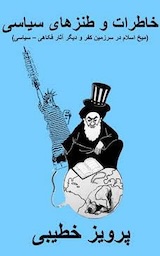The New Yorker:
From 2011: PepsiCo takes stock of the obesity epidemic.
By John Seabrook
PepsiCo’s headquarters sit on a broad, grassy hilltop in Purchase, New York, the site of a former polo club, in rolling Westchester horse country. The office complex—seven identical white cubes joined at the corners, designed in 1970 by Edward Durell Stone—looks more like a European government ministry than the home of a business founded on sugary drinks like Pepsi-Cola and Mountain Dew and salty snacks like Lay’s potato chips and Fritos corn chips. The entire hundred-and-sixty-eight-acre campus is brand free, except for the PepsiCo flag, which floats next to the Stars and Stripes over the main entrance and displays a globe encircled with colored stripes that loosely correspond to PepsiCo’s rainbow of brand images. Scattered around the grounds, like giant boulders left behind by a retreating glacier, is PepsiCo’s collection of monumental sculptures, such as Richard Erdman’s “Passage,” hewn from a four-hundred-and-fifty-ton block of travertine, and Claes Oldenburg’s thirty-seven-foot-high steel trowel, which is embedded in the earth. Nearer the entrance, stands of exotic trees and sunken Japanese gardens and stone walkways impart a monastic feel.
PepsiCo is the largest food-and-beverage company in the United States, and the second-largest in the world, after Nestlé. If PepsiCo were a country, the size of its economy—sixty billion dollars in revenues in 2010—would put it sixty-sixth in gross national product, between Ecuador and Croatia. Although the flagship brand, Pepsi-Cola, has always been second to Coca-Cola, the Frito-Lay division is ten times larger than its largest competitor, Diamond Foods, Inc., of San Francisco. Its products take up whole aisles at Walmart. They are the first thing you see when you enter a deli or a convenience store, and they’re in pharmacies, office-supply stores, schools, libraries, and the vending machines at work. PepsiCo’s snacks are also deeply embedded in our social rituals and national institutions. (At the climactic moment of the national college-football championship game, in January, when Auburn was about to kick the winning field goal, the sportscaster Brent Musberger yelped, “This is for all the Tostitos!”) If grazing on snacks throughout the day eventually comes to replace eating regular meals—a situation that already exists in some households—we’ll have PepsiCo to thank.
Go to link










Comments